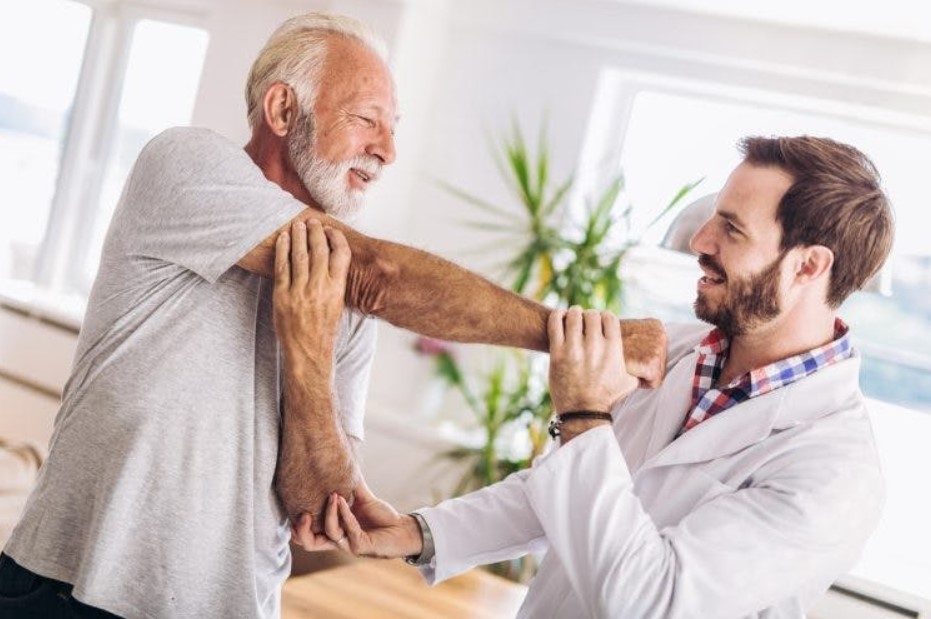
The rehabilitation of motor function can be difficult and time-consuming after brain damage, such as a stroke. Physical therapy is critical in improving rehabilitation and assisting patients in regaining motor function. The Brunnstrom stages of Recovery model offers a helpful framework for comprehending the normal cycles of motor recovery. The six stages of this concept, each of which denotes a different level of recovery, were created by Swedish physical therapist Dr. Signe Brunnstrom in the 1960s. We will go over each of the six stages and how they relate to the healing process in depth.
Stage 1: Flaccidity
Flaccidity is a hallmark of the first phase in the Brunnstrom Phases of Recovery. This indicates that the injured limb or appendages are limp, lacking emotion or tone. Depending on the damage’s severity, this period might last anywhere from a few hours to a few weeks. At this stage, therapy focuses on preserving the joint range of motion, avoiding joint contractures, and increasing circulation to the afflicted region.
Stage 2: Synergy
The emergence of synchronous movements is a hallmark of the subsequent phase of the Brunnstrom Phases of Recovery. This signifies that the damaged limb is moving but not within the patient’s control.
The motions during this period often have a predictable pattern and are stereotyped. If the patient tries to raise an arm, the shoulder blade may elevate, the elbow may stretch out, and the wrist may stretch. At this stage, therapy aims to encourage muscle activation and assist the patient in regaining some degree of autonomy over their motions.
Stage 3: Synergistic Dominance is the third stage.
Increased synchronicity and spasticity characterize the third phase of the Brunnstrom Phases of Recovery. This entails an increase in muscular tone and stiffness and an intensification of the stereotyped motions during Stage 2. This period usually lasts a few weeks to a few months.
At this point, therapy aims to encourage functional movements, decrease stiffness, and encourage voluntary movement control.
Stage 4: Spasticity Reduction
The 4th phase of the Brunnstrom Phases of Recovery is distinguished by a reduction in tightness and the appearance of some control that is voluntary. This suggests that the patient may begin certain movements freely and that the afflicted limb has reduced stiffness. This period usually lasts a few months to a lifetime. During this stage, the emphasis of therapy is on developing strength and endurance, as well as fostering functional motions.
Stage 5: Growing Independence
A greater degree of independence in everyday tasks is a hallmark of the fifth phase of the Brunnstrom Phases of Recovery.
This signifies that the patient has some freedom in performing functional motions such as reaching, grabbing, and manipulating items. This period might span anywhere from one day to many years. Therapy during this period focuses on strengthening effective movements, improving endurance and stamina, and fostering independence in everyday tasks.
Stage 6: Normal Function
The recovery of typical motor function characterizes the 6th and final phase of the Brunnstrom Phases of Recovery. This indicates no stiffness in the afflicted limb and that the individual with the condition can move with a normal tone of muscles and coordination. This step can take years to complete and may not be achievable for all individuals depending on the extent of the damage.
Conclusion
Finally, the Brunnstrom Phases of Recovery provide a valuable framework to explain the course of motor recovery after a neurological lesion. Each of the six phases illustrates a different stage of recovery and aids patients and healthcare professionals understand common recovery patterns. By being aware of these phases, healthcare providers may better prepare their treatment plans to match each patient’s requirements and give patients and their families a clearer notion of what to anticipate during the rehabilitation process. It is significant to remember that each patient’s recovery process is distinct, and the length of time for each phase may change based on the gravity of the accident and other elements.
